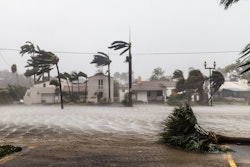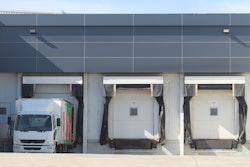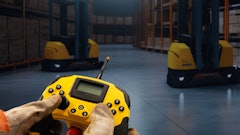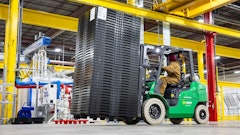
Over the years, executing a risk mitigation plan has transformed from something that’s nice to have to something that every company must have, at all times, in all facets of the organization.
From the influx of cargo theft, cybersecurity threats, food safety and driver shortage to geopolitical tensions, strikes from rail/dock workers, natural disasters and more, even the smallest gap can pose serious threat to people, product and plant.
Liken it to the blind leading the blind, getting lost in a maze or driving while blindfolded.
Not being able to see ahead and predict and plan accordingly is what sometimes plagues many of today’s supply chain companies.
That’s why mitigating supply chain threats is of utmost importance heading into 2024.
Marina Mayer, editor-in-chief of Food Logistics and Supply & Demand Chain Executive, talks exclusively with Himanshu Mehrotra, VP of product management at FourKites, about how cold chains will always carry an added element of risk and deep dependencies on the horizontal supply chain.
CLICK HERE to read the article in full.
Food Logistics: What are some of the cold food chains biggest threats to date? And why?
Himanshu Mehrotra: While macro factors such as cargo theft, war, and driver shortages undeniably add complexity to cold chain logistics, the persistent challenge of inventory loss and spoilage arguably poses the greatest threat. This is particularly critical as regulatory standards tighten.
A report by the Food and Agriculture Organization (FAO) indicates that approximately 14% of the world's food is lost from harvest to retail, largely owing to inadequate cold chain facilities and poor temperature management during transit. For businesses, especially those operating with slim margins, the financial repercussions of such losses are profound.
But the risk extends beyond mere inventory loss. Companies also face the possibility of shipment rejection. If a shipment fails to meet stringent temperature compliance standards, it’s often rejected unless the shipper can convincingly demonstrate that the correct temperature was maintained throughout transit. The implications of a rejected shipment go beyond the immediate financial loss. It causes a ripple effect in the supply chain, leading to delayed delivery schedules and adversely impacting customer relations.
Food Logistics: 2023 saw a lot of instability within the supply chain, such as geopolitical sanctions, natural disasters, inflation, etc. From your vantage point, how do these factors impact/influence the way companies can mitigate supply chain threats?
Mehrotra: The mix of issues supply chain leaders face, combined with the technologies and solutions available, means that laggards are being forced to adopt change due to constant uncontrollable pressures and leaders are trying to place the right strategic bets. New playbooks are constantly being written and with the emergence of generative AI, we will see new processes be established that five years ago, weren’t even dreamed of. Critical to these strategies are deep, data-driven insights into the supply chain supported by subject matter experts who are embracing change.
For instance, predictive analytics can be utilized to foresee bottlenecks caused by natural disasters, allowing for preemptive action such as rerouting shipments or adjusting inventory levels before the storm even hits. Another example is using real-time data to monitor supplier performance, enabling quick responses to delays or quality issues. This approach also facilitates strategic diversification of suppliers, reducing dependence on any single source and thereby mitigating risks associated with supplier reliability. Having insight upstream and downstream can also help companies optimize inventory levels, striking a balance between minimizing holding costs and ensuring sufficient stock to handle demand fluctuations.
Food Logistics: According to multiple sources, the average value of cargo stolen during reported events in 2023 was $214,104, equivalent to an estimated $223 million in cargo across 1,778 reported theft incidents. What can be accredited to the rise in cargo theft?
Mehrotra: Changing economic times often lead to increases in cargo theft, meanwhile, organized crime continues to become more and more sophisticated. While low-value products are being moved every single day, these don’t have value on the black market or in crime rings. Instead, thieves always target high-value, high-profile goods. The FBI has observed an uptick in strategic cargo theft and fictitious freight cases since the pandemic's onset in 2020. They have identified common types of theft, such as traditional theft of a truck-tractor semi-trailer, identity theft, fictitious pickups, hijacking, pilferage, and warehouse burglaries. Cargo theft is considered a crime of opportunity due to the high volume and mobility of freight. Criminals exploit the speed and rapid activity in the transportation market, often prioritizing speed overdue diligence and compliance vetting.
USA Truck leveraged FourKites to ensure customer loads are protected by requiring the driver or carrier to start tracking prior to receiving the load number at pickup. Knowing where the truck is at all times adds another layer of protection against fraudulent carrier companies attempting to take the load to a new location. As a result, the number of double-brokered orders was reduced.
Food Logistics: Labor disruptions are also substantially higher this year, up 136%, according to Resilinc data. This includes company and site-level strikes, national strikes, layoffs and labor protests, among others. What does this mean for the future of cold food supply chains?
Mehrotra: Cold chains will always carry an added element of risk and deep dependencies on the horizontal supply chain. The cost of an idle supply chain is much higher for cold chain operators which means that the importance of responding quickly and efficiently when disruptions arise cannot be overlooked. In addition, cold chain companies — whether you are a food and beverage shipper, a cold chain distribution provider, a refrigerated carrier or another party in the chain — must invest in understanding partners' health, forecasts, and operating models. This includes details such as financial health, capacity commitments and constraints, facility dwell, customer requirements, claims, and what happens as the bullwhip effect occurs. The leaders in cold chain have invested heavily in a strong horizontal supply chain with the right strategic partners.
In addition to these operational strategies, supply chain leaders must have a relentless focus on developing talent, as well as enhancing it with better information and technology that reduces workloads and streamlines processes. The staff in positions today will be surpassed by technology in five years — they need to embrace new technologies or else they’ll be surpassed by the generation to come.
Food Logistics: What are some things not addressed above that may be pertinent to our readers?
Mehrotra: The success of a cold chain heavily depends on seamless collaboration between all stakeholders — suppliers, transporters and retailers. Supply chain leaders must foster open and frequent communication with partners to ensure everyone is aligned in their role in maintaining the cold chain. Collaborative efforts can help reduce errors, improve response times, and ultimately enhance the quality of delivered products.
CLICK HERE to read the article in full.




















